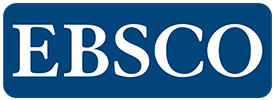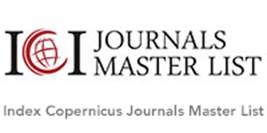Women Managers in Auditing Sector: A Descriptive Research on Turkey
DOI:
https://doi.org/10.33831/jws.v22i1.191Keywords:
auditing, genderAbstract
This study examines the relationship between female managers' presence in audit firms and audit firms' characteristics. In line with the employment rates obtained from POA, it is observed that gender inequality in the audit sector started from employment. In the research part, 90 audit companies' data that published transparency reports in 2018 were used. It has been determined that there are very few female managers in the sector; in fact, 47 of 90 companies do not have a female partner, board member, or responsible auditor. It is also analyzed that in the older audit firms, the audit firms that earn more revenue and big four firms, the number of female managers is significantly higher than in other firms. The study is essential in revealing that women's employment in the audit sector is a crucial problem and detects the positive relationship between corporate governance and female managers.
References
Accounting MOVE Project Report (2019). https://www.wilson-taylorassoc.com/wp-content/uploads/2019/06/2019-Accounting-MOVE-Project-report-.pdf
Anderson, F., Grey, C., and Robson, K. (1998). Work hard, play hard: An analysis of organizational cliché in two accountancy firms. Organization, 5(4), pp. 565–592.
Independent Audit Regulation, https://www.mevzuat.gov.tr/mevzuat?MevzuatNo=16907&MevzuatTur=7&MevzuatTertip=5
Bear, S., Rahman, N., and Post, C. 2010. The impact of board diversity and gender composition on corporate social responsibility and firm reputation. Journal of Business Ethics, 97(2), pp. 207–221.
Bitbol-Saba, N. and Dambrin, C. (2019). “It’s not often we get a visit from a beautiful woman!” The body in client-auditor interactions and the masculinity of accountancy. Critical Perspectives on Accounting, 64, pp. 1- 21.
Breesch, D. and Branson, J. (2009). The effects of auditor gender on audit quality. The IUP Journal of Accounting Research and Audit Practices, 8, pp. 78-107.
Ballantine, J. and Mccourt, P. (2011) The impact of ethical orientation and gender on final year undergraduate auditing students' ethical judgments, Accounting Education, 20(2), pp. 187-201.
Bilimoria, D. (2006). The relationship between women corporate directors and women corporate officers. Journal of Managerial Issues, 18(1), pp. 47-61.
Bureau of Labor Statistics (BLS). (2019). https://www.bls.gov/cps/cpsaat11.htm
Bozcuk. A. E. (2018). Türkiye’deki bağımsız denetim kuruluşlarında üst düzeydeki cinsiyet çeşitliliği ve gelir etkisi. Uluslararası Sosyal Araştırmalar Dergisi, 11(59), pp. 882-890.
Can, G . (2018). A Descriptive research on Turkish listed manufacturing companies’ independent audit characteristics. Muhasebe Bilim Dünyası Dergisi, 20 (3), pp. 650-678.
Chartered Financial Analyst (2018). Annual Report. https://www.cfainstitute.org/-/media/documents/corporate-record/annual-report-2019.ashx
Cohen, P. N. and Huffman, M. L. (2007). Working for the woman? female managers and the gender wage gap. American Sociological Review, 72(5), pp .681–704.
Dalton, D. W., Cohen, J. R., Harp, N. L. and McMillan, J.J. (2014) Antecedents and consequences of perceived gender discrimination in the audit profession. Auditing: A Journal of Practice & Theory, 33(3), pp. 1-32.
Dambrin, C. and Lambert, C. (2008). Mothering or auditing? The case of two Big Four in France. Accounting. Auditing & Accountability Journal, 21, pp. 474-506.
Fogarty, T. J., Parker, L. M. and Robinson, T. (1998). Where the rubber meets the road: Performance evaluation and gender in large public accounting organizations. Women in Management Review, 13(8), pp. 299–311.
Financial Reporting Council (2019). Key Facts and Trends in the Accountancy Profession. https://www.frc.org.uk/getattachment/109373d4-abc2-424f-84d0-b80c2cec861a/Key-Facts-and-Trends-2019.pdf
Fondas, N. and Sassalos, S. (2000). A different voice in the boardroom: How the presence of women directors affects board influence over management”, Global Focus, 12, pp. 13-22
Hardies, K., Breesch, D. and Branson,J. (2010). Are female auditors still women? analyzing the sex differences affecting audit quality”, SSRN Electronic Journal, 10.2139/ssrn.1409964.
Hardies, K., Breesch, D. and Branson, J. (2015). The female audit fee premium. Auditing: A Journal of Practice, 34 (4), pp. 171–195.
Haron, H., Ismail, I., Ibrahim, D. N., and Na, A. L. (2014). Factors influencing ethical judgment of auditors in Malaysia. Malaysian Accounting Review, 13(2).
Haynes, K. (2017). Accounting as gendering and gendered: a review of 25 years of critical accounting research on gender. Critical Perspectives on Accounting, 43, pp. 110-124.
Hoobler J.M., Masterson C.R., Nkomo, SM and Michel, E.J.(2018). The business case for women leaders: meta-analysis, research critique, and path forward. Journal of Management; 44(6), pp. 2473-2499.
Hopwood, A. G. (1987). Accounting and gender: An introduction. Accounting, Organizations, and Society, 12(1), 65–69.
Hottegindre, G., Loison, M.‐C., and Farjaudon, A.‐L. (2017). Male and female auditors: an ethical divide. International Journal of Auditing, 21, pp. 131– 149.
Huang, T., Chiou, J., Huang, H. and Chen, J. (2015). Lower audit fees for women audit partners in Taiwan and why. Asia Pacific Management Review, 20(4), pp. 219- 233.
Huse, M. and Solberg, A. (2006). “Gender-related boardroom dynamics: How women make and can make contributions on corporate boards”, Women in Management Review, 21, pp. 113-130.
International Finance Corporation. Women on Boards and in Business Leadership. https://www.ifc.org/wps/wcm/connect/topics_ext_content/ifc_external_corporate_site/ifc+cg/topics/women+on+boards+and+in+business+leadership
Ittonen, K. and Peni, E. (2012). Auditor's Gender and Audit Fees, International Journal of Auditing, 16, pp. 1-18.
Jalbert, T., Jalbert, M. and Furumo, K.. (2013). The Relationship between CEO gender, financial performance, and financial management. Journal of Business & Economics Research (JBER), 11(1), pp. 25 – 34.
Jones, J., MacTavish, C. and Schultz, W. (2019). The effect of gender and firm identification on auditor pre-negotiation judgments. Advances in Accounting, 44, pp. 49-57.
Keski̇n, D., Tutar, S., Öktem, B. ve Akçay, B. (2020). ARI okunabilirlik endeksine göre cinsiyetin kilit denetim konularının okunabilirliği üzerine etkisi: sektörel bir inceleme. Öneri Dergisi , 15(53) , pp. 209-228.
Kharuddin, K. A. M., Basioudis, I. and Hay, D. (2019). Partner industry specialization and audit pricing in the United Kingdom. Journal of International Accounting, Auditing, and Taxation, 35, pp. 50-70.
Khlif, H. and Achek, I. (2017). Gender in accounting research: a review. Managerial Auditing Journal, 32(6), pp. 627-655.
Kirkham, L., and Loft, A. (1993). Gender and the construction of the professional accountant. Accounting, Organizations and Society, 18, pp. 507–558.
Kokot, P. (2015). Let's talk about sex(ism): Cross-national perspectives on women partners' narratives on equality and sexism at work in Germany and the UK, Critical Perspectives on Accounting, 27, pp. 73-85
Lehman, C. R. (1992). Herstory’ in accounting: The first eighty years. Accounting, Organizations and Society, 17, 262–285.
Marriage, M. and Gross, A. (2019). Big Four auditors present male and pale faces to top UK clients, Financial Times. https://www.ft.com/content/7b339d24-6dc3-11e9-a9a5-351eeaef6d84
Maupin, J. R., and Lehman, C. R. (1994). Talking heads: Stereotypes, status, sex-roles and satisfaction of female and male auditors. Accounting, Organizations and Society, 19(4/5), pp. 427–437.
Melero, E. (2011). Are workplaces with many women in management run differently? Journal of Business Research, 64, pp. 385-393.
Mensi-Klarbach, H. (2014). Gender in top management research: Towards a comprehensive research framework. Management Research Review, 37(6), pp. 538-552.
Miller, T. and Triana, M. (2009). Demographic Diversity in the Boardroom: Mediators of the Board Diversity - Firm Performance Relationship. Journal of Management Studies, 46, pp. 755 – 786.
Nguyen, T.H.H., Ntim, C.G., ve Malagila, J. (2020). Women on corporate boards and corporate financial and non-financial performance: A systematic literature review and future research agenda. International Review of Financial Analysis, Forthcoming.
Oakley, A. (1985). Sex, Gender and Society, England: Gower Publishing Company Limited.
Ocak, M. and Atuk Özden, E. (2018). Signing auditor-specific characteristics and audit report lag: a research from Turkey, Journal of Applied Business Research, 34(2), pp. 277-294.
Ocak, M. (2019). Do female owners and female directors of audit firm affect audit firm performance? findings from audit firms in Turkey, https://ssrn.com/abstract=3391559.
Perryman, A. A., Fernando, G. D. and Tripathy, A. (2016). Do gender differences persist? An examination of gender diversity on firm performance, risk, and executive compensation. Journal of Business Research, 69 (2), pp. 579-586.
Reheul, A.-M., Van Caneghem, T., Van den Bogaerd, M. and Verbruggen, S. (2017). Auditor gender, experience and reporting in nonprofit organizations. Managerial Auditing Journal, 32(6), pp. 550-577.
Sarıçi̇çek, R. and Ayteki̇n, M. (2020). Türkiye’deki Bağımsız Denetçilerin Denetim Kalitesini Azaltan Davranışlarının Analizi. Muhasebe ve Finansman Dergisi, 87, 89-106.
Sian, S., Agrizzi, D., Wright, T. and Alsalloom, A. (2020). Negotiating constraints in international audit firms in Saudi Arabia: Exploring the interaction of gender, politics, and religion. Accounting, Organizations and Society, 84, pp. 1-16.
Schaefer, J. and Zimmer, M. (1995). Gender and earnings of certain accountants and auditors: A comparative study of industries and regions, Journal of Accounting and Public Policy, 14(4), pp. 265-291.
Stainback, K. and Kwon, S. (2012). Female Leaders, Organizational Power, and Sex Segregation. The ANNALS of the American Academy of Political and Social Science, 639(1), pp. 217–235.
Şaşman Kaylı, D. (2018). Toplumsal cinsiyet bakış açısından mekanın gör dedikleri. In: Y. Kubar and H. Karakaya (Eds.). Toplumsal Cinsiyet Algısına Ekonomik ve Sosyolojik Bir Bakış (pp. 1-28). Ankara: Gazi Kitabevi.
Terjesen, S. and Singh, V. (2008). Female presence on corporate boards: a multi-country study of environmental context. Journal of Business Ethics, 83, pp. 55–63.
Tiron Tudor, A. ve Faragalla, W. (2019). Gender as a dimension of inequality in accounting organizations and developmental HR strategies. Administrative Sciences, 10(1).
Tobol, Y., Bar-El, R., Arbel, Y., and Azar,H.(2019). Gender differences in the effect of employee-manager friendships on salary dynamics in CPA firms. Heliyon, 5(10), pp. 1-10.
Torchia, M., Calabrò, A. and Huse, M. (2011). Women directors on corporate boards: from tokenism to critical mass. Journal of Business Ethics 102, pp. 299–317.
Turkish Commercial Code
Uyar, A. and Güngörmüş A. H. (2011). Professional knowledge and skills required for accounting majors who intend to become auditors: perceptions of external auditors. Business and Economics Research Journal, 2(3), pp. 33-49.
Whiting, R. H., and Van Vugt, O. (2006). Effect of gender, family structure, and firm affiliation, on career promotion in auditing. Accountancy Working Paper Series No. 01_03/06).
World Health Organization (WHO), https://www.who.int/health-topics/gender#tab=tab_1 .
Downloads
Published
How to Cite
Issue
Section
License
Authors who publish with this journal agree to the following terms:
- Authors retain copyright and grant the journal right of first publication, with the work [6 months] after publication simultaneously licensed under a Creative Commons Attribution License that allows others to share the work with an acknowledgement of the work's authorship and initial publication in this journal.
- Authors are able to enter into separate, additional contractual arrangements for the non-exclusive distribution of the journal's published version of the work (e.g., post it to an institutional repository or publish it in a book), with an acknowledgement of its initial publication in this journal.
- Authors are permitted and encouraged to post their work online (e.g., in institutional repositories or on their website) prior to and during the submission process, as it can lead to productive exchanges, as well as earlier and greater citation of published work (See The Effect of Open Access)







